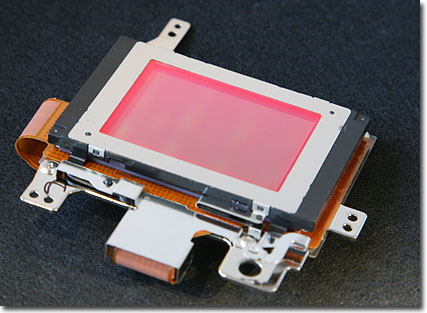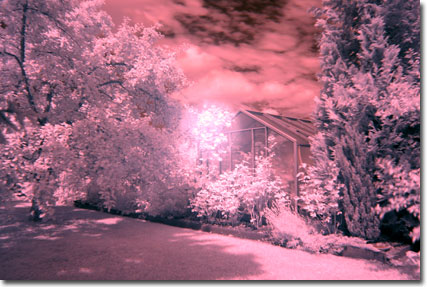Coatings
In the introduction I wrote that you don't clean the semiconductor but a peace of coated glass. Now it's time to learn a few things about coatings.
Why is a filter coated? Light coming from a medium of low refraction index (air, n=1.0) gets partly reflected when entering a medium of higher refraction index (glass, n=1.5). About 4% get reflected and additional 4% get reflected when the light leaves the glass again. So you lose 8% of the light due to reflection by passing a slice of uncoated glass.
If you apply a thin layer of a material with a different refraction index on the glass surface, the light rays get reflected on two different surfaces. With a light path difference of λ/4 destructive interference takes place and no light gets reflected. This condition is only valid for one wavelength and shorter and longer wavelengths get partly reflected again. With a complicated multilayer coating (MC) which consists of 6, 8 or even more layers the condition of destructive interference can be broadened to cover a whole wavelength region. These MCs can reduce reflection to less than 0.5% for a region of 400 to 700nm. Outside this region, reflectivity increases rapidly and can be higher than the "natural" 4%. One can take advantage of this possibility during the calculation of the optimal coating. A coating which is highly reflective above 700nm is a dichroic or hot mirror. So the necessary coating on the sensor filter has double functionality. It lowers reflectivity in the visible spectrum and reflects the non-visible infrared light.

These calculations are valid for light hitting the surface perpendicularly. For light under larger angles the layers get virtually thinner and the wavelength range is shifted. This is the reason why the sensor filter surface reflects red light under angles larger than 45°. The reflective filtering edge shifts from 750nm (infrared) at 0° to 650nm (deep red) at 45°. In a DSLR the maximum angle that occurs is about 30° so this shift is irrelevant for taking daylight pictures.

However, things change when you try to take infrared pictures with an IR pass filter. With some lenses you will see the famous hot spot in the image center. IR light hitting the dichroic filter at small angles can pass the blocking filter. Further away from the image center the IR light hits the filter at larger angles and gets blocked. Depending on the optical construction of the lens, the chosen aperture, and the filtering edge of the dichroic filter, some combinations will show this hot spot and some will not.
In most cases the last layer of the coating is silicon dioxide or another hard, non conductive material. Charge on the filter surface cannot be transported to the edges, so the filter can get electrostaticly charged. Newer sensor filters have an additional indium tin oxide (ITO) coating on top of the hot mirror. It is only 10 to 20nm thick and optically nearly transparent. Its only job is to produce a conductible surface.
How does this influence the cleaning ability? All coatings have to meet standardized specifications and they are written down in Military Specification MIL-C-675C, MIL-C-48497A and MIL-F-48616 or if you prefer the European standards ISO 9211. It's conspicuous that all coatings are quite durable to chemicals and adhesion but vulnerable to abrasion. This is the reason why delicate laser optics are cleaned with polymers (comparable to Sensor-Film) and not with cotton swabs.